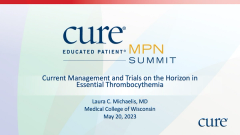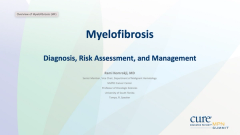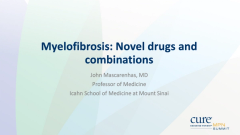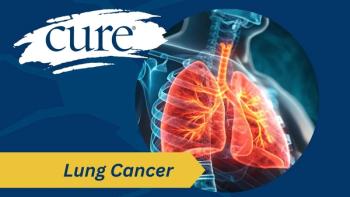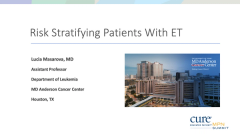
Educated Patient® MPN Summit Current Management and Trials on the Horizon in ET Presentation: May 20, 2023
Watch Dr. Laura C. Michaelis, from the Medical College of Wisconsin, discuss the current and future management of essential thrombocythemia during the CURE® Educated Patient® MPN Summit.
Episodes in this series

Patients with essential thrombocythemia (ET) can play a crucial role in their cancer care by encouraging communication between their providers, according to Dr. Laura C. Michaelis.
Patients, Michaelis, of the Medical College of Wisconsin said during the CURE® Educated Patient® MPN Summit, need to make sure their doctors are talking to each other.
“Sometimes the primary care doctor knows the most about you and the hematologist knows the most about your disease,” she said. “You're stuck in the middle there. But you can be an important way that your doctor and your primary care doctor talk.”
Michaelis said that patients with ET — a type of cancer where there is uncontrolled growth of platelets in the blood — should bring their medical records with them to appointments, speak to their doctor about age-specific cancer screenings such as mammograms, colonoscopies, pap smears and prostate exams, and make sure their dentist is checking their mouth for oral lesions.
Michaelis stressed that only a small percentage of patients with ET require treatment. But, she said, it’s important for patients to know when they have met those triggers for treatment.
Concerning symptoms for patients with ET, Michaelis told CURE, include: weight loss; abdominal discomfort that could be due to an enlarged spleen; needing less medication to control their platelet count; development of new low red or white blood cell counts that could be due to a change in the bone marrow; night sweats and systemically not feeling well; and severe fatigue, new itching and the swelling of any limbs, the last of which she said is an emergency.
“In general, a change in what you would consider the caliber of your fitness — so just not being the person that you used to feel you were — that should be investigated to make sure it's not about disease transformation,” said Michaelis.
During her Educated Patient presentation, Michaelis also provided an overview of upfront therapies for ET such as hydroxyurea, pegylated interferon and anagrelide, and discussed Besremi (ropeginterferon alpha-2B) — approved by the Food and Drug Administration (FDA) for treatment of adults with polycythemia vera (PV), also a myeloproliferative neoplasm, in 2021 and currently the subject of ongoing clinical trials for the treatment of patients with ET — as well as other trials for ET treatments.
Once doctors decide a patient with ET needs to be treated, “We have to think, ‘How can we treat you most effectively with the least amount of therapy that's needed?’” she said during the summit.
That means addressing cardiovascular risk factors to prevent a heart attack or stroke. So, diet, regular exercise, managing cholesterol and diabetes and not smoking are, she said, critically important. Aspirin is optional for patients with very low-risk disease, and can help with symptoms such as headaches.
But, she cautioned, patients who develop the acquired Von Willebrand disease — a condition that prevents the blood from clotting properly, which is seen when platelet counts are very high and typically involves bleeding from gums or hemorrhoids or long menstrual cycle bleeding — should not take aspirin, she said.
Speaking with CURE following the summit, Michaelis explained why communication is key for patients with cancers such as ET.
“When you have a rare condition, a condition that's not in the bread-and-butter wheelhouse of an oncologist who's also treating breast cancer, colon cancer (or) lung cancer … it's sometimes frustrating when there's not a great back-and-forth (exchange) of information between specialists,” she said. “In addition, the primary care doctor or an emergency room doctor or the doctor you go to for your hip surgery, they also may not be aware of the nuances of essential thrombocythemia, which can manifest themselves in ways that complicate regular, plain old procedures like a dermatological procedure, or a dental procedure or a colonoscopy.
“So, making sure that you connect your specialist with your primary care doctor … can help everybody in that triangulation of information learn more, the better for you, but also mean that (for) the next patient that they encounter with a rare condition, they know the process by which they can be well-informed.”
Facilitating such an exchange can be as simple as passing along a doctors’ business card or phone number or double-checking that your notes are being followed up on.
“We all learn from those efforts, and we apply them later,” Michaelis said. “So, it can build better relationships not just for you, but for patients in the future.
For more news on cancer updates, research and education, don’t forget to

